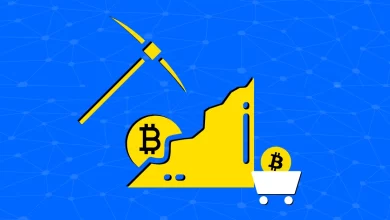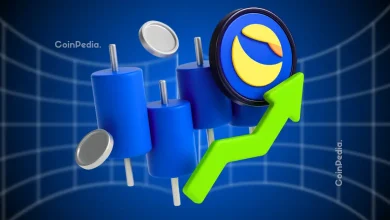
Starknet suffered a nearly three-hour outage following its Grinta upgrade.
This marks Starknet’s second major downtime in two months, raising questions over Ethereum Layer-2 reliability.
STRK fell over 3% as the team promised a full postmortem and pushed ahead with decentralization plans.
Ethereum’s scaling game took another hit.
Starknet, one of the leading Layer-2 networks built to speed up and cheapen Ethereum transactions, went offline for nearly three hours on Tuesday – its second major outage in just two months.
The disruption followed the much-anticipated Grinta upgrade, raising questions about whether high-performance blockchain networks can deliver on reliability as they race to decentralize.
Network Goes Down After Major Upgrade
Starknet, Ethereum’s seventh-largest Layer-2 blockchain with $548 million locked in its ecosystem, suffered a two-hour, 44-minute outage early Tuesday.
The disruption followed the rollout of Grinta (v0.14.0), a major network upgrade meant to overhaul Starknet’s architecture. The network’s sequencer, which manages the order of transactions, failed to process activity, halting block production and leaving users unable to complete transactions.
A blockchain reorganization was triggered from block 1,960,612, meaning an hour’s worth of activity had to be rolled back. Users were asked to resubmit all transactions made during that window.
Second Outage in Two Months
This is the second time in two months that Starknet has faced downtime. Back in July, the network stalled for about 13 minutes due to slow block creation.
The repeat incidents raise questions about whether Ethereum’s Layer-2 networks, often promoted as a solution for scaling, can deliver both speed and stability.
Team Response
The Starknet team recently confirmed that the network was “fully operational” again.
“Block production is back to normal. Most RPC providers are up-and-running, and the remaining ones will upgrade shortly,” the team said in a post on X, adding that a full timeline and technical explanation will be shared soon.
High Ambitions, Growing Pains
The Grinta upgrade was designed to make Starknet more decentralized, with changes to its sequencer, fee system, and mempool. Starknet has also announced plans to integrate Bitcoin staking following overwhelming community approval of proposal SNIP-31.
But as today’s incident shows, major network upgrades come with risk.
Never Miss a Beat in the Crypto World!
Stay ahead with breaking news, expert analysis, and real-time updates on the latest trends in Bitcoin, altcoins, DeFi, NFTs, and more.
FAQs
The outage, which lasted for nearly three hours, was triggered by a sequencer failure following the Grinta (v0.14.0) upgrade. The sequencer, which orders transactions, became unable to process activity.
A sequencer is a component in a Layer-2 blockchain that gathers and orders transactions into batches before submitting them to the main Layer-1 blockchain (like Ethereum).
A blockchain reorganization is when a chain’s history is rewritten to remove a temporary, incorrect branch. The network re-established the correct transaction history by rolling back about an hour’s worth of activity.
No. This is the second major outage in two months. In July, the network also stalled for about 13 minutes due to slow block creation, raising concerns about its stability.
Trust with CoinPedia:
CoinPedia has been delivering accurate and timely cryptocurrency and blockchain updates since 2017. All content is created by our expert panel of analysts and journalists, following strict Editorial Guidelines based on E-E-A-T (Experience, Expertise, Authoritativeness, Trustworthiness). Every article is fact-checked against reputable sources to ensure accuracy, transparency, and reliability. Our review policy guarantees unbiased evaluations when recommending exchanges, platforms, or tools. We strive to provide timely updates about everything crypto & blockchain, right from startups to industry majors.
Investment Disclaimer:
All opinions and insights shared represent the author's own views on current market conditions. Please do your own research before making investment decisions. Neither the writer nor the publication assumes responsibility for your financial choices.
Sponsored and Advertisements:
Sponsored content and affiliate links may appear on our site. Advertisements are marked clearly, and our editorial content remains entirely independent from our ad partners.








